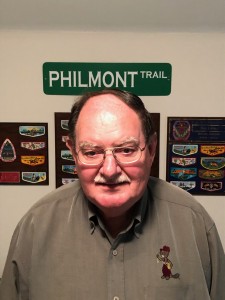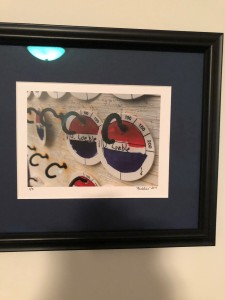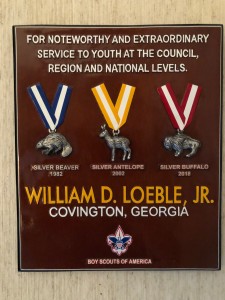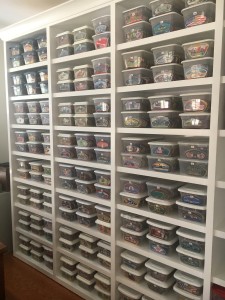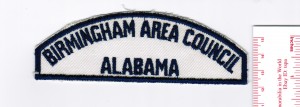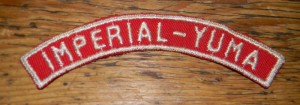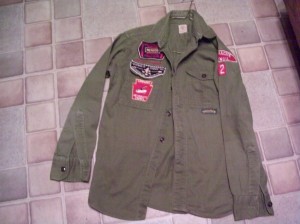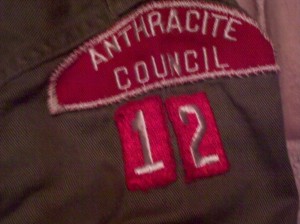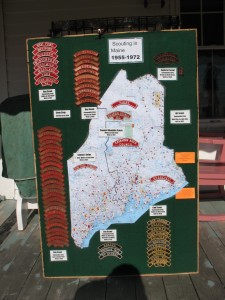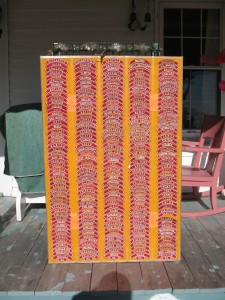One of the most widely collected areas in our hobby are council shoulder patches (CSPs). Every Scout can wear one. Most can be acquired for very little cost and are actively traded. With councils issuing so many special versions for recognition and such it can make collecting them a challenge. They are soon coming up on their 50th birthday as they became official uniform wear circa 1972.
The thing is, CSPs aren’t the first council (or community) identification shoulder wear. That would be what are now referred to as “Lettered Shoulder Patches” or LSPs. For the longest of times we referred to this whole area of collecting as red and white strips (RWS). I think it is because they were the patches, I’m dating myself, we wore on our Scout uniforms. The thing is, there were colors before RWS but that pre-dates almost all of today’s collectors. Here is some history on these and why they are so fun to collect.
Why collect these?
- They are fun. Although plain in colors and design, they are easy to understand and distinctive in their own way. Some turn out easy to come by and others can be excrutiatingly hard to even see let alone acquire.
- They tell the story of Scouting. Many councils never had CSPs. We too often forget that council boundaries were set not only before the internet but before the interstate. As mobility improved, territories (think councils) could come together to pool resources and professional talent.
- They add depth to a collection. There was a transition where most issues were without state identification to then including the state(s). This seemed to have happened in the late 1960s. And mistakes did happen although usually are quite rare.
- They show the reach of BSA truly spanning the globe where American’s were present.
- There are variations but not anywhere to the extent we have today with CSPs. For most councils, there was just one version of lettered shoulder wear.
- They haven’t been faked much. And the fakes that have been made are distinctive from the real patches as these were last issued in the age of cotton thread rather and Swiss-style loom embroidery.
Why so tough?
I have been told that a “full order” could be as few as a dozen strips with the minimum order being half that. That is, a council could order as few as six of one lettered shoulder patch.
For some of these, they are “gauze backed” which might well mean that they were stiched up one at a time for what was needed. For some of these, there may have only been one or two patchs made.
Some of these were only worn by council level professional staff and volunteers. Some were used for contingents to national jamborees and a few for world jamborees.
What is their history?
For the first 18 years of BSA, there was no authorized community or council identification. It was not until 1928 that they came into the catalog for some communities and 1930 for councils. I am of the opinion it was due to regional and national trainging conferences for professional staff that drove the need for council identification. Up to that point, other than world jamborees there were not multi-council gatherings. If everyone is from the same council, why does one need council identification?
From the first collecting book for red and whites by Art Hyman and Rob Kutz:
- 1928 Community strips authorized (khaki and red, KRS )
- 1930 Council strips authorized (khaki and red) for council Scouters only
- Early 1940’s size increased and other colors authorized
- Dark blue and gold (yellow) for Cub Scouts (BYS)
- White and blue (WBS) and blue and white (BWS) for Sea Scouts
- Green and brown (GBS) for Explorer Scouts
- Blue and blue for (BBS) for Air Scouts
- Starting in 1952, the specific uniform colors were phased out (except for Sea Scouts) converting everyone to red and white (RWS).
- 1972 discontinued although a few councils kept using a version and some commerative or fundraising issues have come out since.
Actually the hobby identifies these days the difference between the pre-World War 2 uniform color of “tan kahki” to post WW2 color of “green khaki”. The earlier ones are referred to as tan and red strips (TRS).
Why the transition to CSPs?
From a regional retired Scout Executive who as an SE at the time of transition in 1972 from red and whites to CSPs he said that councils could get stuck with inventory for a unit that came and went. Plus they took up a lot of space to store as inventory. With CSPs there only needed to be one patch for everyone. Now I think the Scouts lost something with this transition. I think it would be interesting if we went back to community strips and with current patch making technology, it might be well doable.
Other resources:
If you are a member of the International Scout Collectors Association, ISCA, you can download for free the Council Shoulder Insignia guide for free which inculdes full chapters on collecting lettered shoulder patches. Visit their web-site at ISCA Website. Go to the Members Only area for the CSI guide.
Examples from my collection:
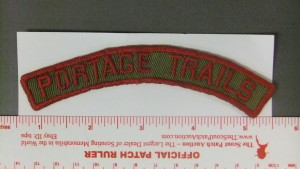
Portage Trails Council khaki and red strip
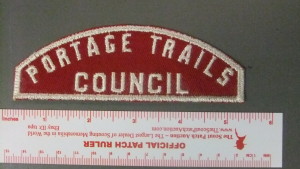
Portage Trails Council red and white with type 1 border.
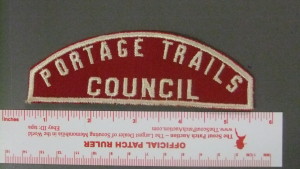
Portage Trails Council RWS with type 2 border.
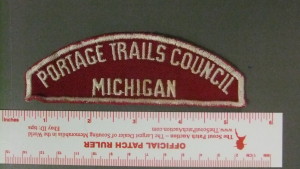
Second edition of Portage Trails Council with Michigan added.
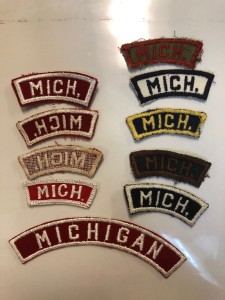
Examples of different versions of states strips.
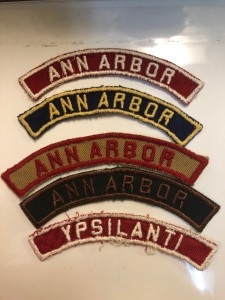
Examples of different styles of community strips for the same community.







